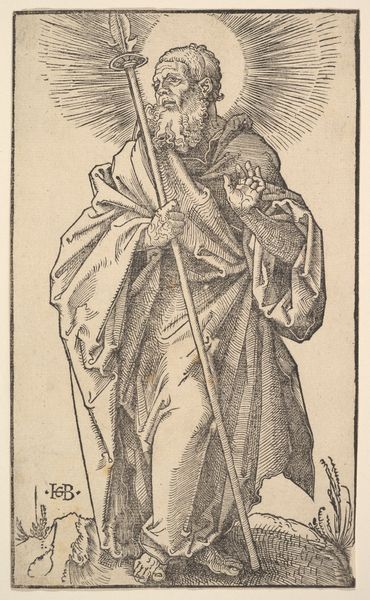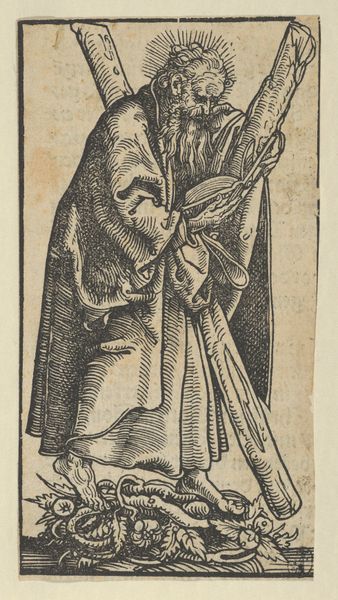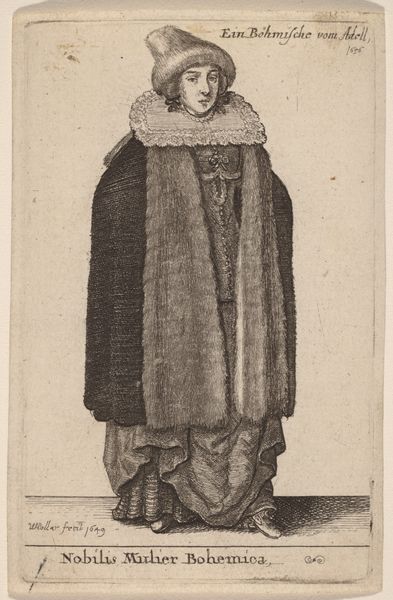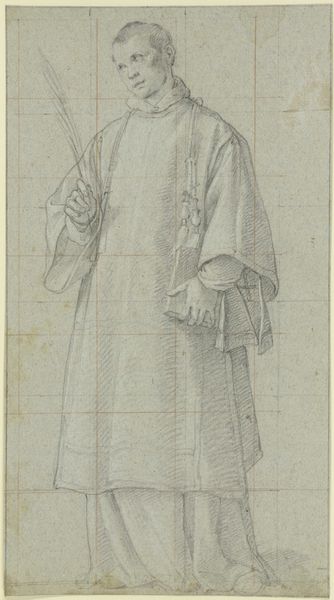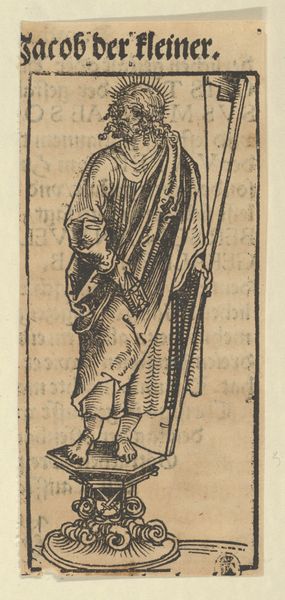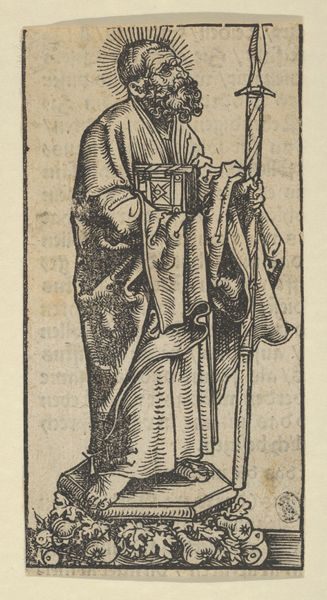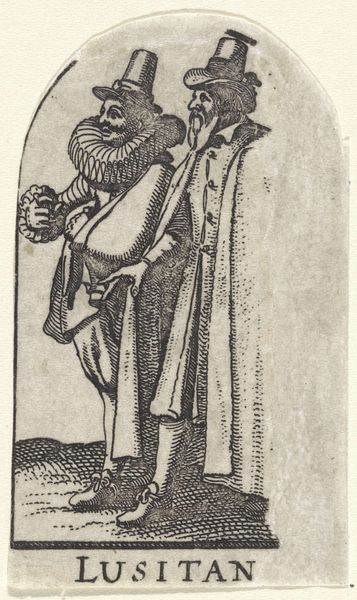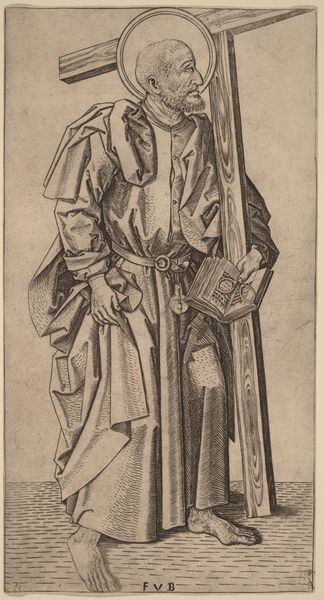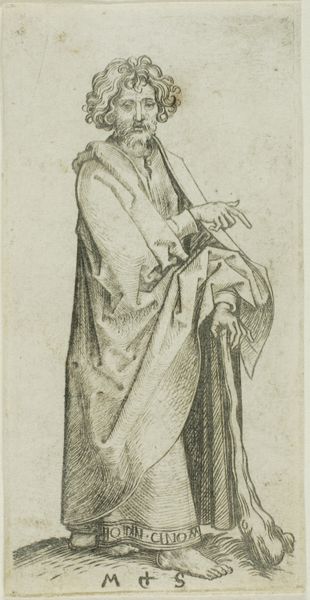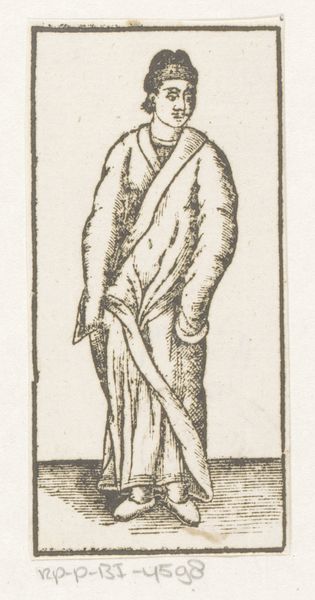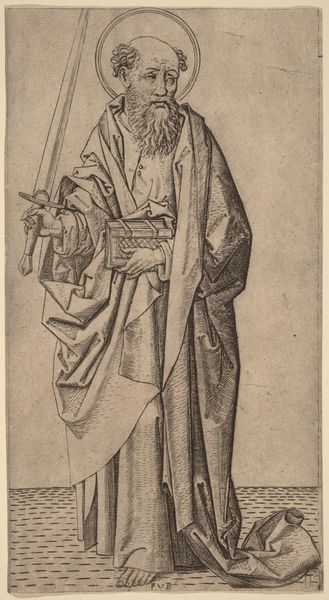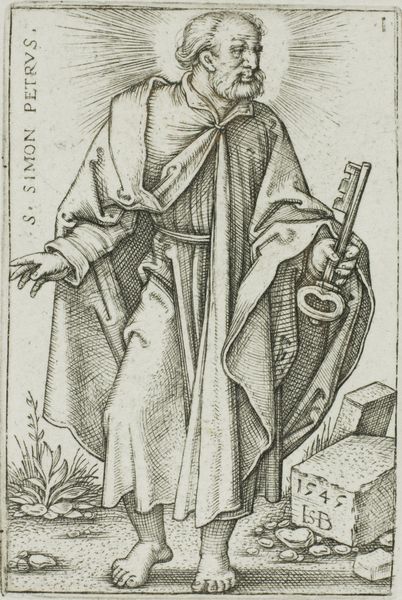
print, engraving
# print
#
11_renaissance
#
northern-renaissance
#
engraving
Dimensions: sheet: 25 x 15.2 cm (9 13/16 x 6 in.)
Copyright: National Gallery of Art: CC0 1.0
Curator: Here we have Lucas Cranach the Younger's "Philip Melanchthon," an engraving dating back to 1561, offering us a glimpse into a key figure of the Reformation. Editor: My immediate response is the starkness. It’s so linear, creating this really firm, almost imposing presence despite being a fairly small print. There’s not much softness here. Curator: Absolutely. This piece, being a print, serves as a powerful vehicle for disseminating Melanchthon's image and, by extension, his theological influence. Prints allowed for relatively inexpensive reproduction and circulation, contributing to the Reformation's propaganda efforts. Editor: And consider what that circulation *means*, especially with a figure so enmeshed in the religious and political upheaval of the time. He's cloaked, quite literally, in what appears to be wealth and status. What sort of image does that project in this specific period of upheaval? Curator: That fur-trimmed coat speaks volumes, doesn't it? The texture and volume stand out markedly. This work, and indeed Cranach's other portraits of Reformers, were crafted within specific socio-political circumstances. Showing Melanchthon in such a way subtly reinforced the authority and respectability of the Reformation leadership. Editor: The Rod of Asclepius there in the upper corner, though. The reference to healing… How conscious are we meant to be of Melanchthon's own human vulnerability while his status is displayed so overtly? I keep looking at the eyes – that sort of hooded gaze almost suggesting something haunted behind the status. Curator: It’s a keen observation, considering the turbulence that defined that era. Melanchthon was navigating complex theological debates and facing the realities of religious conflict. Cranach provides access to his likeness as much as his position, capturing the man alongside his symbolic worth to the movement. Editor: Seeing how effectively prints operate on multiple levels in that period is vital, really—they're documents shaped as consciously for a social need as paintings commissioned for display. I definitely read a quiet calculation into his look – it’s an enduring political skill in itself. Curator: I completely agree. Cranach's portrayal of Melanchthon embodies not only an individual but the strategic positioning of a movement during its formative years. It shows art fulfilling very specific roles in history. Editor: Precisely! Understanding prints such as this means grappling with their impact as both aesthetic objects and sociopolitical tools. I’ll keep an eye on the background—what messages did the engraver try to amplify through his thoughtful, yet constrained tools and techniques?
Comments
No comments
Be the first to comment and join the conversation on the ultimate creative platform.
